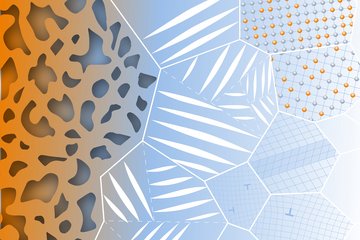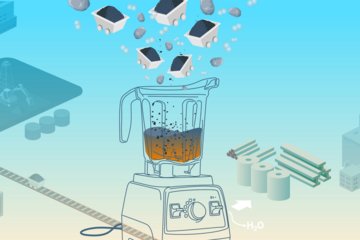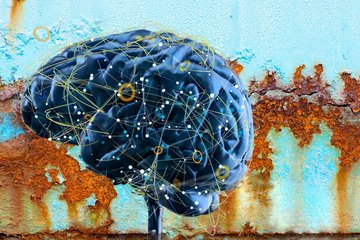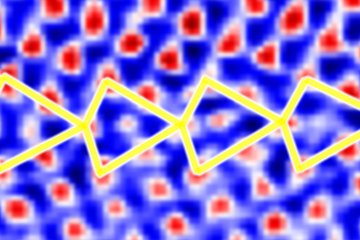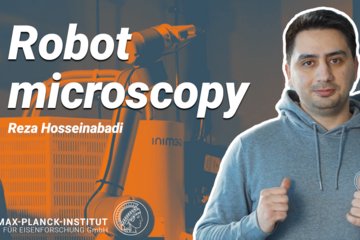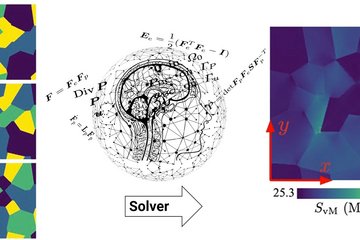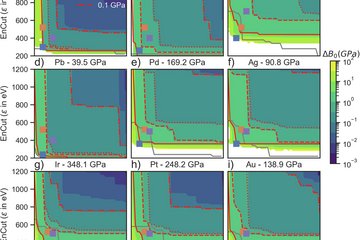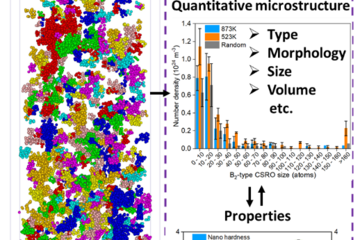All genres
1.
Journal Article
Phonon Lifetimes throughout the Brillouin Zone at Elevated Temperatures from Experiment and Ab Initio. Physical Review Letters 123 (23), 235501 (2019)
2.
Journal Article
Ab initio based method to study structural phase transitions in dynamically unstable crystals, with new insights on the β to ω transformation in titanium. Physical Review B 100 (10), 104110 (2019)
3.
Journal Article
An insight into using DFT data for Calphad modeling of solid phases in the third generation of Calphad databases, a case study for Al. Calphad 65, pp. 79 - 85 (2019)
4.
Journal Article
Anomalous Phonon Lifetime Shortening in Paramagnetic CrN Caused by Spin-Lattice Coupling: A Combined Spin and Ab Initio Molecular Dynamics Study. Physical Review Letters 121 (12), 125902 (2018)
5.
Journal Article
Temperature dependence of the Gibbs energy of vacancy formation of fcc Ni. Physical Review B 97 (21), 214106 (2018)
6.
Journal Article
Strong impact of lattice vibrations on electronic and magnetic properties of paramagnetic Fe revealed by disordered local moments molecular dynamics. Physical Review B 93 (22), 224411 (2016)
7.
Journal Article
Effects of Aluminum on Hydrogen Solubility and Diffusion in Deformed Fe–Mn Alloys. Advances in Materials Science and Engineering 2016, 4287186 (2016)
8.
Journal Article
Improved method of calculating ab initio high-temperature thermodynamic properties with application to ZrC. Physical Review B 91 (21), 214311 (2015)
9.
Journal Article
Random phase approximation up to the melting point: Impact of anharmonicity and nonlocal many-body effects on the thermodynamics of Au. Physical Review B 91 (20), 201103 (2015)
10.
Journal Article
Understanding anharmonicity in fcc Materials: From its origin to ab initio strategies beyond the quasiharmonic approximation. Physical Review Letters 114 (19), 195901 (2015)
11.
Journal Article
Breakdown of the Arrhenius law in describing vacancy formation energies: The importance of local anharmonicity revealed by Ab initio thermodynamics. Physical Review X 4 (1), 011018 (2014)
12.
Journal Article
Perspectives on point defect thermodynamics. Physica Status Solidi B 251 (1), pp. 97 - 129 (2014)
13.
Journal Article
Combined ab initio, experimental, and CALPHAD approach for an improved thermodynamic evaluation of the Mg–Si system. Calphad: Computer Coupling of Phase Diagrams and Thermochemistry 37, pp. 77 - 86 (2012)
14.
Conference Paper
Ab initio description of the Ti BCC to ω transition at finite temperatures. In: PTM 2015 - Proceedings of the International Conference on Solid-Solid Phase Transformations in Inorganic Materials 2015, pp. 755 - 756 (Eds. Chen, L.-Q.; Militzer, M.; Botton, G.; Howe, J.; Sinclair, C. W. et al.). International Conference on Solid-Solid Phase Transformations in Inorganic Materials 2015, PTM 2015, Whistler, BC, Canada, June 28, 2015 - July 03, 2015. International Conference on Solid-Solid Phase Transformations in Inorganic Materials 2015, Whistler, BC, Canada (2015)
15.
Conference Paper
Ab initio description of finite temperature phase stabilities and transformations. In: PTM 2015 - Proceedings of the International Conference on Solid-Solid Phase Transformations in Inorganic Materials 2015, pp. 751 - 752 (Eds. Chen, L.-Q.; Militzer, M.; Botton, G.; Howe, J.; Sinclair, C. W. et al.). International Conference on Solid-Solid Phase Transformations in Inorganic Materials 2015, PTM 2015, Whistler, BC, Canada, June 28, 2015 - July 03, 2015. PTM 2015, Whistler, British Columbia (2015)
16.
Talk
From Thermodynamics to phonon lifetimes: Anharmonic calculations with ab initio accuracy. CECAM workshop: Anharmonicity and thermal properties of solids, Paris, France (2018)
17.
Talk
Ab initio determination of phonon lifetimes up to the melting point. EMRS Spring 2017, Strasbourg, France (2017)
18.
Talk
The origin of anharmonicity in fcc solids. TMS 2016, Nashville, TN, USA (2016)
19.
Talk
Random phase approximation up to the melting point: Impact of anharmonicity and nonlocal many-body effects on the thermodynamics of Au. DPG Spring Meeting 2015, Berlin, Germany (2015)
20.
Talk
Ab initio description of the Ti bcc to omega transition at finite temperatures. DPG-Frühjahrstagung 2015, Berlin, Germany (2015)
